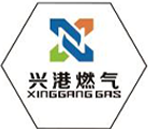
Dec . 07, 2024 07:22
Back to list
cyclone separator
Understanding Cyclone Separators Principles and Applications
Cyclone separators are an essential component in various industrial processes, designed to separate particulates from gases or liquids based on different densities. Their effective operation is crucial across multiple industries, including chemical manufacturing, food processing, pharmaceuticals, and mining. This article explores the principles behind cyclone separators, their design implications, advantages, and application areas.
Principles of Operation
Cyclone separators operate based on the principles of centrifugal force and inertia. The core mechanism involves the introduction of a gas or liquid stream tangentially into a cylindrical chamber. This design initiates a spiral flow pattern within the separator, causing particles to experience centrifugal forces due to the rapid rotation of the fluid. Heavier particles, owing to their mass, are pushed outward against the walls of the chamber, where they lose momentum and settle down into a collection vessel, often referred to as the hopper. Meanwhile, the cleaner gas or fluid continues to the outlet at the top of the cyclone.
The efficiency of a cyclone separator is influenced by several factors, including the design dimensions, the velocity of the incoming stream, and the size and density of the particles. The geometry of the cyclone—namely its height, diameter, and the angle of the conical section—plays a significant role in optimizing separation efficiency. Transforming the incoming flow into a spiraling motion while minimizing pressure loss is key to a successful cyclone design.
Design and Configuration
Cyclone separators come in various configurations, tailored to specific applications and operating conditions. The standard design includes a cylindrical body, a conical bottom section, and an outlet for the cleaned gas or liquid. Some designs may incorporate multiple cyclones in a parallel or series arrangement to enhance separation effectiveness, especially in applications dealing with a high volume of particulate matter.
Different configurations, such as the high-efficiency cyclone, used primarily in air pollution control, can achieve separation efficiencies exceeding 99% for larger particles. This is particularly important in industries looking to comply with stringent environmental regulations. On the other hand, low-efficiency cyclones may be more suitable for removing larger droplet phases in liquid applications.
Advantages of Cyclone Separators
cyclone separator

One of the primary advantages of cyclone separators is their relatively low maintenance requirements. Unlike other separation technologies, such as filters or scrubbers, cyclones do not utilize moving parts or complex mechanisms, resulting in fewer opportunities for mechanical failure. This simplicity contributes to lower operational costs over time.
Another benefit is their ability to handle high volumes of gas or liquid, making them suitable for various industrial processes. Cyclones can function effectively across a broad range of flow rates, adapting to changes in system demands without significant losses in performance.
Additionally, cyclone separators can operate efficiently under varying temperatures and pressures, providing versatility across different applications. This adaptability makes them ideal for industries like petrochemicals, where process conditions frequently fluctuate.
Applications in Various Industries
Cyclone separators find extensive applications in multiple industries. In the agricultural sector, they are utilized for grain cleaning and dust separation processes. In the oil and gas industry, cyclones play a critical role in separating oil droplets from gas streams, thereby enhancing product purity. Similarly, in mineral processing, these separators are essential for classifying and recovering valuable particles from ore.
Moreover, in air pollution control, cyclones are deployed to reduce particulate emissions from industrial exhaust, thus helping companies adhere to environmental regulations. The versatility of cyclone separators makes them valuable tools in enhancing process efficiency across various sectors.
Conclusion
In summary, cyclone separators are vital for efficiently separating particulates from gases and liquids in multiple industries. Their design simplicity, low operational costs, and ability to handle high volumes make them an attractive choice for manufacturers and processors. As industries continually evolve and aim for greater efficiency and sustainability, the role of cyclone separators is expected to grow, contributing to cleaner and more effective production processes. Through understanding their principles, design, and applications, industries can leverage cyclone separators to their advantage, ensuring both operational efficiency and regulatory compliance.
Next:
Latest news
-
Safety Valve Spring-Loaded Design Overpressure ProtectionNewsJul.25,2025
-
Precision Voltage Regulator AC5 Accuracy Grade PerformanceNewsJul.25,2025
-
Natural Gas Pressure Regulating Skid Industrial Pipeline ApplicationsNewsJul.25,2025
-
Natural Gas Filter Stainless Steel Mesh Element DesignNewsJul.25,2025
-
Gas Pressure Regulator Valve Direct-Acting Spring-Loaded DesignNewsJul.25,2025
-
Decompression Equipment Multi-Stage Heat Exchange System DesignNewsJul.25,2025

